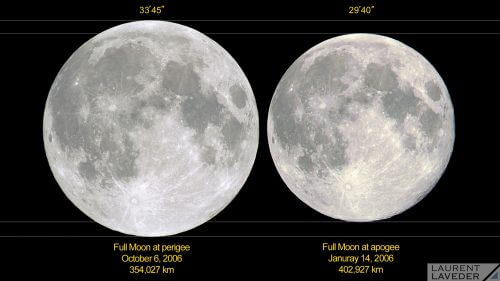In fact, the moon started to get big already last night, and today it will continue to do so, although yesterday it was before the peak and today we will see it a little bigger. This is the largest approach of a full moon in about seventy years.

The full moon of this month - November 14, 2016 will be the brightest since 1948. When a combination of a full moon occurs, and the proximity of the moon to the earth in its orbit, the moon is seen to be especially large. This phenomenon is called a SUPER MOON.
In fact, the moon started to get big already last night, and today it will continue to do so, although yesterday it was before the peak and today we will see it a little bigger. This is the largest approach of a full moon in about seventy years.
Of course, there is no astronomical innovation in this phenomenon and it is more of a cultural phenomenon. The Moon's orbit is elliptical, at its lowest point it is 362,600 km from the Earth and at its furthest point 404,400. The Moon orbits the Earth in an anomalous orbit of 27.55 days. What is meant by the lack of normality is that its height varies from perigee (the closest point in the orbit) to the other. Thus the definition of SUPER MOON means that the full moon occurs up to 24 hours before or after the phrygia. Similarly - a mini moon (Mini Moon) occurs when the moon is in epigae - the farthest point in its orbit within 24 hours of the full moon in that month.
From Earth it appears that the diameter of the moon varies from one full moon to another and ranges from 74.4 centimeters to 86.6 centimeters. Today, the moon will be in Phrygia at a distance of 356,511 km 22 hours and XNUMX minutes before the moon reaches Milou.
The distance this time is about 652 km smaller than that of April 7, 2016. The range of variations of Phrygia reaches about 2,800 km. It will reach a slightly smaller distance of 356,425 on December 6, 2052. Distances by the way are measured from the center of the Earth.
This is the largest full moon since January 26, 1948 (356,490 km) until the one that will arrive on November 25, 2034 (356,446 km).
To observe the phenomenon, one simply has to go to a nearby dark and cloudless place (unlike other phenomena, there is no need to go as far as the desert). It is also an opportunity for telescope owners to closely investigate interesting phenomena on the lunar surface. For the enthusiasts among us, tonight the Israeli Astronomical Society will hold a guided observation.
